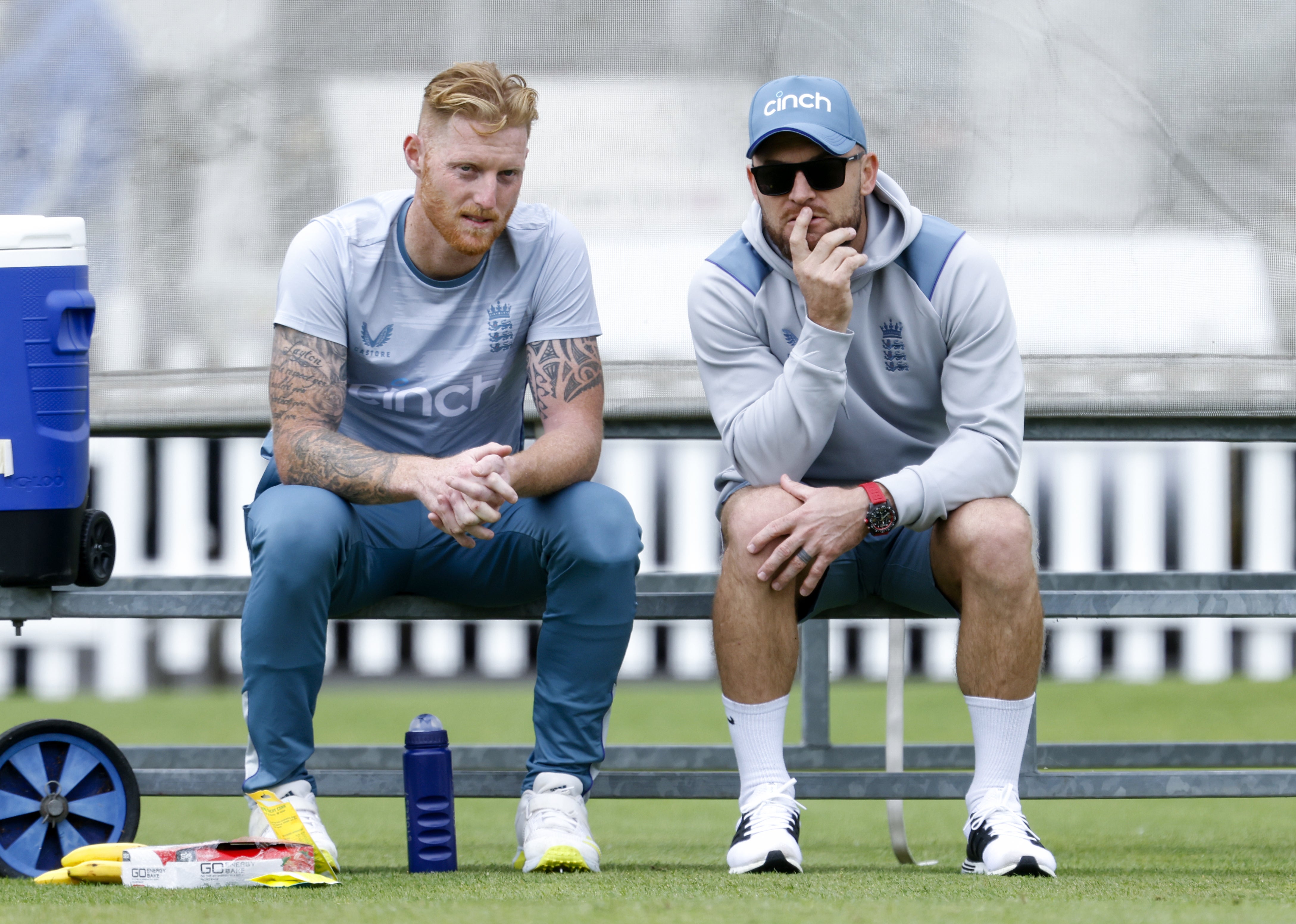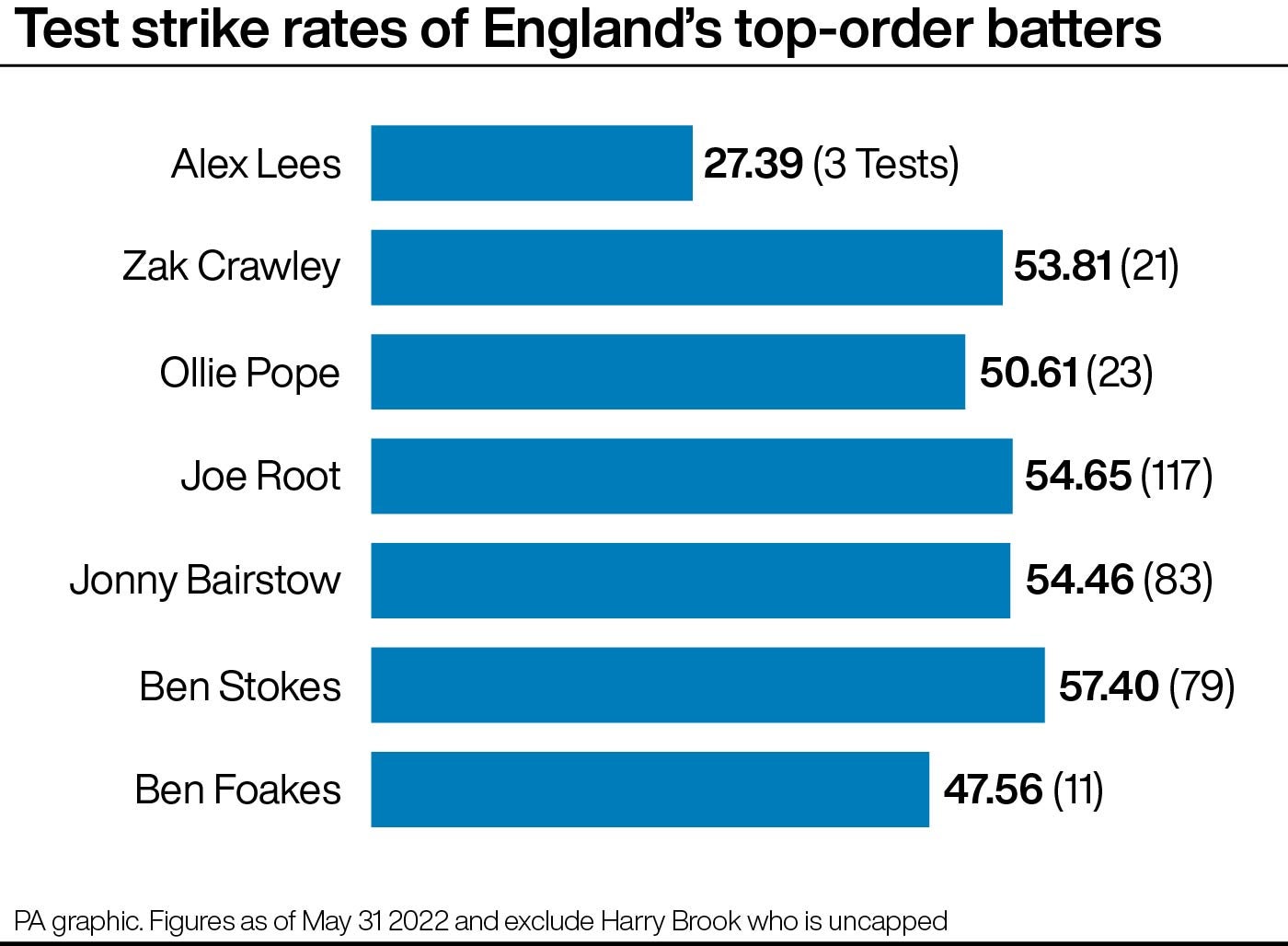What could English cricket’s Stokes-McCullum era look like?
The new captain-coach combination get its first run out against New Zealand this week

Your support helps us to tell the story
From reproductive rights to climate change to Big Tech, The Independent is on the ground when the story is developing. Whether it's investigating the financials of Elon Musk's pro-Trump PAC or producing our latest documentary, 'The A Word', which shines a light on the American women fighting for reproductive rights, we know how important it is to parse out the facts from the messaging.
At such a critical moment in US history, we need reporters on the ground. Your donation allows us to keep sending journalists to speak to both sides of the story.
The Independent is trusted by Americans across the entire political spectrum. And unlike many other quality news outlets, we choose not to lock Americans out of our reporting and analysis with paywalls. We believe quality journalism should be available to everyone, paid for by those who can afford it.
Your support makes all the difference.England’s new era of Test cricket begins this week with head coach Brendon McCullum encouraging them to play with freedom.
New captain Ben Stokes will be the perfect on-field embodiment of the attacking style favoured by McCullum and here we assess the tools at their disposal.
Stokes stands out

Stokes celebrated his installation as captain with an astonishing innings of 161 from 88 balls in his next first-class innings for Durham, conjuring memories of his epic England counter-attacks at Headingley in the 2019 Ashes and against New Zealand in the same year’s World Cup final.
He will bat at number six against the Black Caps and brings the highest Test strike rate of any of England’s top order, with his 57.40 runs per hundred balls exceeded only by tail-ender Stuart Broad.
Previous captain Joe Root is England’s most reliable source of runs and, while he is not a noted big hitter, his Test strike rate of 54.65 shows his canny accumulation and is actually slightly higher than his more-aggressive Yorkshire colleague Jonny Bairstow (54.46), who is expected to get the nod at number five in between Root and Stokes.
Ollie Pope, tipped to move up to number three, and Zak Crawley also have strike rates above 50 with only Crawley’s opening partner Alex Lees, all the way down at 27.39, standing out as a defensive option.
What could Brook bring?

Harry Brook is the one newcomer among the top-order options after excelling for Yorkshire this season and, while expected to miss out this week, his selection in the squad is another indication of the likely approach under McCullum.
The 23-year-old’s 840 LV= Insurance County Championship runs this season have come at 75.60 runs per 100 balls and he boasts a career first-class strike rate of 64.36 in 87 innings.
On average, the England team’s strike rate is 6.42 runs higher in first-class cricket overall than in Tests – should Brook follow that pattern, it would translate to a Test strike rate around 58 and slightly higher than Stokes.
The biggest differences are more than 19 runs for Lees (46.51 in first-class cricket) and bowler Craig Overton (63.56, compared to 43.86 in Tests). Broad is the only player to score quicker in Tests, 64.68 compared to 63.26 in first-class cricket.
Kiwi comparison

McCullum won plaudits in his latter years as New Zealand captain for ushering in a free-flowing, carefree style of play, with sportsmanship blended with attacking intent.
Having averaged 3.07 runs per over from 2010 to his appointment at the end of 2012, they lifted that to 3.43 under his leadership and in the process saw their win rate increase from 23.8 per cent to 35.5 per cent. Their run rate has settled back to 3.24 since his retirement, with an impressive 55.3 per cent win rate.
England, since Test cricket resumed after the Covid-19 shutdown, have a strikingly-similar run rate and win percentage of 3.04 and 26.9 per cent respectively to the Kiwi team McCullum took over. Their only innings above four runs per over in that time came in pre-ordained declarations against the West Indies in March 2020 – with Stokes and Jos Buttler opening – and this March.
Comparing England’s squad to the New Zealand XI from McCullum’s final Test in 2016 – in which he hit a 54-ball century against Australia, still the fastest in Test history – suggests he has similar resources to work with in his new role.
While that team’s strike rates average out higher at 56.62 overall, that is inflated by the ferocious lower-order hitting of Tim Southee, in particular, and Matt Henry. Totting up all Test runs and balls faced by that team – up to the present day – sees the runs scored at 52.38 per hundred balls compared to 54.07 for England.
Join our commenting forum
Join thought-provoking conversations, follow other Independent readers and see their replies
Comments